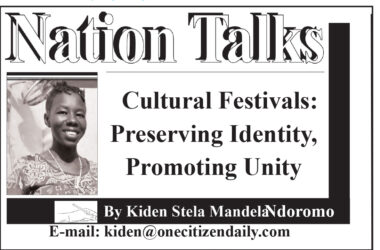By Joseph Akim Gordon
Conflict analysis is a structured inquiry into the causes and potential direction of a conflict. It seeks to identify opportunities for managing or resolving disputes without recourse to violent action. It may include a variety of analytical methods, and so more information is gathered to resolve conflict. Conflict is further defined as a clash of interests between two or more parties when at least one of the parties seeks to assert its interests at the expense of another party’s interests.
Conflict can be due to political differences, power struggles, socio-economic grievances, beliefs, interests, ethnic-based conflict, pastoralists conflict with farmers, the incompatibility of ideas, or objectives. Conflict is not new; it is as old as humanity, so conflict is not a new phenomenon. Conflict is part of our lives; even parents and children are involved in conflict. Bad governance, corruption, nepotism, robbery, looting, and many others are sources of conflict.
Conflict resolution and negotiation skills are important to bring conflict to an end, but we have a situation where we have a dispute with divergent interests that are incompatible and non-reconcilable that might escalate into various forms of conflict; therefore, dispute resolution is the management of conflict.
Dispute resolution emphasizes collective, win-win, participatory approaches to dispute settlement. The successful resolution of conflict is essential to reducing cases of criminality as a result of conflict. You will note that increased understanding of the situation can reduce tension, and the involvement of the parties in conflict with positive speech, expression through body language, increased self-knowledge, and the atmosphere in the meeting hall are all positive meeting outcomes. But in a situation where the conflict is not resolved, the mediation effort must continue to find an amicable solution. You will realize your personal dislike when teamwork breaks down, all effort is wasted, and talent is misplaced. This follows a vicious downward spiral, or negativity prevails.
For effective conflict management, you should be aware that conflict has no time limit; it can happen at any time, but you must be alert all the time. Being proactive in the prevention of conflict is much better and less expensive, but when you allow conflict to spread, finding a solution is time-consuming and expensive because early resolution is the most effective way to resolve conflict. To start a peaceful negotiation, you need to collect as much information as possible from both sides.
Conflict analysis covers identifying issues, actors, the level, and the intensity of the conflict, be they political, economic, social, or institutional structure and impacts. In the process of negotiation, make sure that good relations exist among the participants, and the first priority is to keep people separate from problems. Pay attention to the interests presented; listen first and comment or talk later. Set out the facts and explore options together. It is best to resolve conflict through discussion and negotiation rather than through aggression.
Conflicts are often analyzed at different levels: interpersonal, group/community, and national, as well as in terms of how the levels interact with each other. Conflict management includes negotiation, mediation, and arbitration. Conflict resolution involves the understanding of the mindsets of both sides, that is, the attitudes and behaviours of the actors.
involved, their behaviour during the discussion, and the contradictions during the discussion, there are those who go off point and those that go off gender. It is worth noting that in negotiation, there are those who are rigid and those who are flexible, but to reduce tension and stop conflict, the best option is to be flexible in the negotiation. There is give and take in the interest of resolving conflict, resulting in a win-win for the conflicting parties.
The nature of conflict can also be positive because it can help identify the real problems needing solutions, bring about needed change, and permit adjustments to be made without threatening.
Conflict management includes the following: Commitment is the basis for resolving conflict, whatever it takes. Commitment and determination are sure ways of resolving conflict. The second is communication, which is essential to keeping the participants knowledgeable about the subject matter.
The language of communication must be clear and understandable by all participants. If there is a need for translation, it must be understood by all. The end result of Conflict resolution and negotiation must be positive, but if there are outstanding issues, there must be a plan B. All in all, there must be optimism in a peaceful environment.
To maintain good relationships and the determination to achieve a peaceful resolution of conflict. Build a new relationship, change the way we look at issues, and clarify the most important issue. It must be noted that our communities need to understand the skills of negotiation because we have conflict everywhere, so we need to learn the skills of negotiation to resolve some of the conflicts affecting our lives.
The author can be reached through e-mail: akimgordon222@gmail.com




